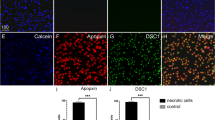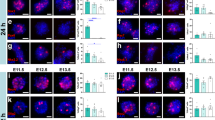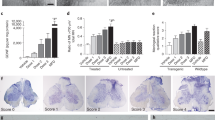Abstract
Here we describe transplantation of olfactory ensheathing cells (OECs) or Schwann cells derived from transgenic pigs expressing the human complement inhibitory protein, CD59 (hCD59), into transected dorsal column lesions of the spinal cord of the immunosuppressed rat to induce axonal regeneration. Non-transplanted lesion-controlled rats exhibited no impulse conduction across the transection site, whereas in animals receiving transgenic pig OECs or Schwann cells impulse conduction was restored across and beyond the lesion site for more than a centimeter. Cell labeling indicated that the donor cells migrated into the denervated host tract. Conduction velocity measurements showed that the regenerated axons conducted impulses faster than normal axons. By morphological analysis, the axons seemed thickly myelinated with a peripheral pattern of myelin expected from the donor cell type. These results indicate that xenotranplantation of myelin-forming cells from pigs genetically altered to reduce the hyperacute response in humans are able to induce elongative axonal regeneration and remyelination and restore impulse conduction across the transected spinal cord.
This is a preview of subscription content, access via your institution
Access options
Subscribe to this journal
Receive 12 print issues and online access
$209.00 per year
only $17.42 per issue
Buy this article
- Purchase on Springer Link
- Instant access to full article PDF
Prices may be subject to local taxes which are calculated during checkout





Similar content being viewed by others
References
Edge, A. S. B., Gosse, M. E. & Dinsmore, J. Xenogeneic cell therapy: current progress and future developments in porcine cell transplantation. Cell Transplantation 7, 525–539 ( 1998).
Auchincloss, H. Jr. & Sachs, D.H. Xenogeneic Transplantation. Annu. Rev. Immunol. 16, 433–470 (1998).
Li, Y., Field, P.M., Raisman, G. Repair of adult rat corticospinal tract by transplants of olfactory ensheathing cells. Science 277, 2000– 2002 (1997).
Imaizumi, T., Lankford, K.L. & Kocsis, J.D. Transplantation of olfactory ensheathing cells or Schwann cells restores rapid and secure conduction across the transected spinal cord. Brain Res. 854, 70– 78 (1999).
Ramon-Cueto, A., Plant, G.W., Avila, J. & Bunge, M.B. Long-distance axonal regeneration in the transected adult rat spinal cord is promoted by olfactory ensheathing glia transplants. J. Neurosci. 18, 3803–3815 (1998).
Devon, R. & Doucette, R. Olfactory ensheathing cells myelinate dorsal root ganglion neurites. Brain Res. 589, 175–179 (1992).
Levi, A.D. & Bunge, R.P. Studies of myelin formation after transplantation of human Schwann cells into the severe combined immunodeficient mouse. Exp. Neurol. 130, 41– 52 (1994).
Honmou, O., Felts, P.A, Waxman, S.G. & Kocsis, J.D. Restoration of normal conduction properties in demyelinated spinal cord axons in the adult rat by transplantation of exogenous Schwann cells. J. Neurosci. 16, 3199–3208 ( 1996).
Imaizumi, T., Lankford, K.L., Waxman, S.G., Greer, C.A. and Kocsis, J.D. Transplanted olfactory ensheathing cells remyelinate and enhance axonal conduction in the demyelinated dorsal columns of the rat spinal cord. J. Neurosci. 18, 6176–6185 (1998).
Fodor, W.L. et al. Expression of a functional human complement inhibitor in a transgenic pig as a model for the prevention of xenogeneic hyperacute rejection. Proc. Natl. Acad. Sci. USA 91, 11153 ( 1994).
Franklin, R.J., Gilson, J.M., Franceschini, I.A. & Barnett, S.C. Schwann cell-like myelination following transplantation of an olfactory bulb-ensheathing cell line into areas of demyelination in the adult CNS. Glia 17, 217–224 (1996).
Blakemore, W.F. & Crang, A.J. The use of cultured autologous Schwann cells to remyelinate areas of persistent demyelination in the central nervous system. J. Neurol. Sci. 70, 207–223 (1985).
Li, Y. & Raisman, G. Schwann cells induce sprouting in motor and sensory axons in the adult rat spinal cord. J. Neurosci. 14, 4050–4063 ( 1994).
Kuhlengel, K.R., Bunge, M.B., Bunge, R.P. & Burton, H. Implantation of cultured sensory neurons and Schwann cells into lesioned neonatal rat spinal cord: II. Implant characteristics and examination of corticospinal tract growth . J. Comp. Neurol. 293, 73– 91 (1990).
Kato, T., Honmou, O., Uede, T., Hashi, K. & Kocsis, J.D. Transplantation of human olfactory ensheathing cells elicits remyelination. Glia (In Press) (2000).
Berthold, C.H. in Physiology and pathobiology of axons. (ed. Waxman, S.G.) 3–64 (Raven, New York 1978).
Aguayo, D.A. Axonal elongation into peripheral nervous system “bridges” after central nervous system injury rat. Science 214, 913–933 (1981).
Schwab, M.E., Kapfhammer, J.P. & Bandtlow, C.E. Inhibitors of neurite growth. Annu. Rev. Neurosci. 16, 565–595 ( 1993).
Ramon-Cueto, A. & Valverde, F. Olfactory bulb ensheathing glia: a unique cell type with axonal growth-promoting properties . Glia 14, 163–173 (1995).
Taniuchi, M., Clark, H.B., Schweitzer, J.B. & Johnson, E.M. Expression of nerve growth factor receptors by Schwann cells of axotomized peripheral nerves: ultrastructural location, suppression by contact, and binding properties. J. Neurosci. 8, 664– 681 (1988).
Windebank, J.A. & Poduslo, J.F. Neuronal growth factors produced by adult peripheral nerve after injury. Brain Res. 385, 197–200 ( 1986).
Trapp, B.D., et al. Axonal transection in the lesion of multiple sclerosis. N. Engl. J. Med. 338, 278–285 (1998).
Deacon, T., et al. Histological evidence of fetal pig neural cell survival after transplantation into a patient with Parkinson's disease. Nature Med. 3, 350–353 (1997).
Chen, S. C. et al. Treatment of severe liver failure with a bioartificial liver. Ann. N. Y. Acad. Sci. 831, 350–336 (1997).
Watanabe, E. et al. Cardiomyocyte transplantation in a porcine myocardial infarction model. Cell Transplantation 7, 239– 246 (1998).
Costa, C., Zhao, L., Decesare, S. & Fodor, W.L. Comparative analysis of three genetic modifications designed to inhibit hyperacute rejection of xenografts. Xenotransplantation. 6, 6– 16 (1999).
Fujioka, H. et al. Carboxyfluorewcin (CFSE) labelling of hepatocytes for short-term localization following intraportal transplantaion. Cell transplantation 3, 397–408 ( 1994).
Acknowledgements
This work was supported in part by an Advanced Technology Program grant from the National Institutes of Standards and Technology to W.L.F, the National Institutes of Health (NIH) (NS 10174); the National Multiple Sclerosis Society (RG2135) and the Medical Research and Rehabilitation and Development Research Services of the Department of Veterans Affairs.
Author information
Authors and Affiliations
Corresponding author
Rights and permissions
About this article
Cite this article
Imaizumi, T., Lankford, K., Burton, W. et al. Xenotransplantation of transgenic pig olfactory ensheathing cells promotes axonal regeneration in rat spinal cord. Nat Biotechnol 18, 949–953 (2000). https://doi.org/10.1038/79432
Received:
Accepted:
Issue Date:
DOI: https://doi.org/10.1038/79432
This article is cited by
-
Protease resistance of porcine acidic mammalian chitinase under gastrointestinal conditions implies that chitin-containing organisms can be sustainable dietary resources
Scientific Reports (2017)
-
The transgenic cloned pig population with integrated and controllable GH expression that has higher feed efficiency and meat production
Scientific Reports (2015)
-
Effects of transplantation of olfactory ensheathing cells in chronic spinal cord injury: a systematic review and meta-analysis
European Spine Journal (2015)
-
Tissue sparing, behavioral recovery, supraspinal axonal sparing/regeneration following sub-acute glial transplantation in a model of spinal cord contusion
BMC Neuroscience (2013)
-
Epithelial and endothelial barriers in the olfactory region of the nasal cavity of the rat
Histochemistry and Cell Biology (2008)



